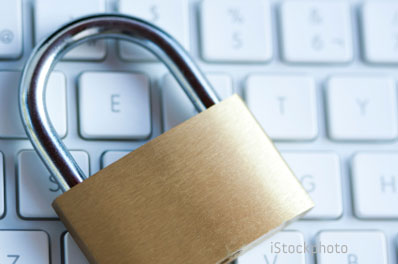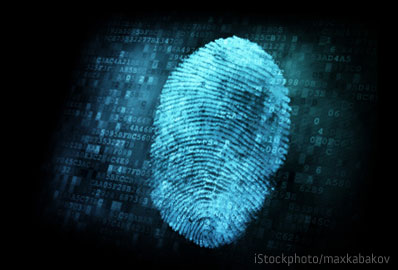
See our new article on simple ways to protect your privacy, posted on 2/2/201.
Privacy is an increasingly rare commodity these days. Just search for yourself on PeekYou—you might be surprised at the number of companies that claim to have information about your family, income, address, phone number and much, much more.
That's because your personal information, including your email address, phone number and social security number, is worth a lot of money to legitimate businesses and bad guys alike. The bad guys just want to steal from you. Companies want to know as much about you as possible so they can sell you more products and services or serve you ads that are highly relevant to your demographics and preferences.
So take these simple steps to protect your valuable personal information.
1. Don't fill out your social media profile.
The more information you share online, the easier it’s going to be for someone to get their hands on it. Don’t cooperate.
Take a look at your social media profiles and keep them barren—the people who need to know your birth date, email address and phone number already have them. And what exactly is the point of sharing everything about yourself in your Facebook profile? If you care about your privacy, you won’t do it.
2. Be choosy about sharing your social security number—even the last 4 digits.
Think twice about sharing your social security number with anyone, unless it’s your bank, a credit bureau, a company that wants to do a background check on you or some other entity that has to report to the IRS. If someone gets their hands on it and has information such your birth date and address they can steal your identity and take out credit cards and pile up other debt in your name.
Even the last four digits of your social security number should only be used when necessary. The last four are often used by banks an other institutions to reset your password for access your account.
Plus, if someone has the last four digits and your birth place, it's a lot easier to guess the entire number. That's because the first three are determined by where you, or your parents, applied for your SSN. And the second set of two are the group number, which is assigned to all numbers given out at a certain time in your geographic area. So a determined identity thief with some computing power could hack it given time.
 3. Lock down your hardware.
3. Lock down your hardware.
Set up your PC to require a password when it wakes from sleep or boots up. Sure, you may trust the people who live in your house, but what if your laptop is stolen or you lose it?
Same thing with your mobile devices. Not only should you use a passcode to access them every time you use them, install an app that will locate your phone or tablet if it’s lost or stolen, as well as lock it or wipe it clean of any data so a stranger can’t get access to the treasure trove of data saved on it.
And, make sure your computers and mobile devices are loaded with anti-malware apps and software. They can prevent prevent criminals from stealing your data. We recommend Norton Internet Security ($49.99 on norton.com or $17.99 on Amazon) in our computer security buying guide or stepping up to Norton 360 Multi-Device ($59.99 on norton.com or $49.99 on Amazon) if you have mobile devices. And, you'll want to double up your protection on Android devices by installing , since we found anti-malware apps are dismal at detecting spyware.
4. Turn on private browsing.
If you don’t want anyone with physical access to your computer to see where you’re hanging out online you should enable "private browsing," a setting available in each major web browser. It deletes cookies, temporary Internet files and browsing history after you close the window.
Every company that advertises online is interested in knowing what sites you visit, what you buy, who you’re friends with on social networks, what you like and more. By gathering information about your online activities they can serve you targeted ads that are more likely to entice you to buy something.
For instance, the Facebook, Twitter, and Google+ buttons you see on just about every site allow those networks to track you even if you don’t have an account or are logged into them. Other times information collection companies rely on embedded code in banner ads that track your visits, preferences, and demographic information.
If you truly care about your privacy you’ll surf the Internet anonymously by hiding your IP address. You can do this using a web proxy, a Virtual Private Network (VPN) or Tor, a free open network that works by routing your traffic through a series of servers, operated by volunteers around the world, before sending it to your destination.
5. Use a password vault that generates and remembers strong and unique passwords.
Most people know better than to use the same password for more than one website or application. In reality, it can be impossible to remember a different one for the dozens of online services you use. The problem with using the same password in more than one place is if someone gets their hands on your password—say, through a phishing attack—they can access all your accounts and cause all sorts of trouble.
To eliminate this dilemma, use a password manager that will not only remember all your passwords, but will generate super strong and unique ones and automatically fill them into login fields with the click of a button.
LastPass is an excellent and free choice.
6. Use two-factor authentication.
You can lock down your Facebook, Google, Dropbox, Apple ID, Microsoft, Twitter and other accounts with two-factor authentication. That means that when you log in, you'll also need to enter a special code that the site texts to your phone. Some services require it each time you log in, other just when you're using a new device or web browser. The Electronic Frontier Foundation has a great overview of what's available.
Two-factor authentication works beautifully for keeping others from accessing your accounts, although some people feel it’s too time consuming. But if you’re serious about privacy, you’ll put up with the friction.
 7. Set up a Google alert for your name.
7. Set up a Google alert for your name.
This is a simple way to keep an eye on anything someone might be saying about you on the web. It’s just a matter of telling Google what to look for (in this case, your name), as well as what kinds of web pages to search, how often to search and what email address the search engine giant should use to send you notifications. Set up a Google alert here.
8. Pay for things with cash.
According to Business Insider, credit card companies are selling your purchase data to advertisers. Don’t want companies knowing how much booze you’re buying or other potentially embarrassing habits? Buy things the old fashioned way—with coins and bills.
9. Keep your social network activity private.
Check your Facebook settings and make sure only friends can see what you’re doing. Go to the settings cog in the upper right hand corner of your screen, then click on Privacy Settings >> Who can see my stuff.
On Twitter, click on the settings cog, then Settings. From there you can adjust all sorts of privacy settings, such as a box that gives Twitter permission to add your location to tweets as well as the ability to make your tweets private, meaning only people you approve can see them. You can also stop the microblogging platform from tailoring your Twitter experience based on other sites you visit.
If you use Google+, go to Home >> Settings. There you can adjust things like who can interact with you, comment on your posts or start a conversation with you.
10. Don't give our your zip code when making credit card purchases.
Often stores will ask for your zip code when you're checking out with a credit card. Don't give it to them unless you want to donate your details to their marketing database, warns Forbes. By matching your name, taken from your credit card, with your zip code, companies can more easily mine more information, including your address, phone number and email. address.
11. Lie when setting up password security questions.
“What is your mother’s maiden name?” or “In what city were you born?” are common questions websites often ask you to answer so as to supposedly keep your account safe from intruders. In reality, there’s nothing secure about such generic queries. That’s because someone who wants access to your account could easily do some Internet research to dig up the answers.
Not sure you can remember your lies? You can create “accounts” in your password manager just for this purpose.
Do you know any other good privacy tips? Let us know in the comments below!
















From Jeffrey Deutsch on July 23, 2013 :: 10:45 am
It’s not always possible to refuse to give your zip code. For example, many if not most or all of the gas stations around where I live and work (northern Virginia) request the ZIP code—at least if you’re paying at the pump and using your card as a credit card.
Hint: Note that stores most commonly do this when you’re paying with a credit card. That’s because each merchant is commonly held responsible for making sure each transaction is legitimate. If the card was stolen and the true owner requests a chargeback for the transaction, guess who ends up eating it?
If you guessed “the merchant,” go to the head of the class! The card owner sure won’t do it, and s/he doesn’t have to as long as the report was made in time. The bank likely won’t either, and good luck (1) catching the thief and (2) getting any money out of him/her.
After all, that’s exactly why online and phone credit card orders routinely require the entire billing address. (And yes, that’s how I sell my services too.)
Do you recommend that, whenever possible in face-to-face transactions, consumers instead use debit cards and type in their PINs?
Jeff Deutsch
Reply
From Josh Kirschner on July 23, 2013 :: 12:53 pm
It’s understandable why gas stations need to use zip to verify identity (NYC Metrocard terminals do, too) since they don’t interact directly with the customer.
But merchants at the checkout register have other means, such as asking for ID. So it never hurts to ask the merchant “Why are you asking for my zip code?” When I’ve asked, the answer is almost always for marketing purposes. Which is not surprising, because they often ask for my zip AND my email address.
Reply